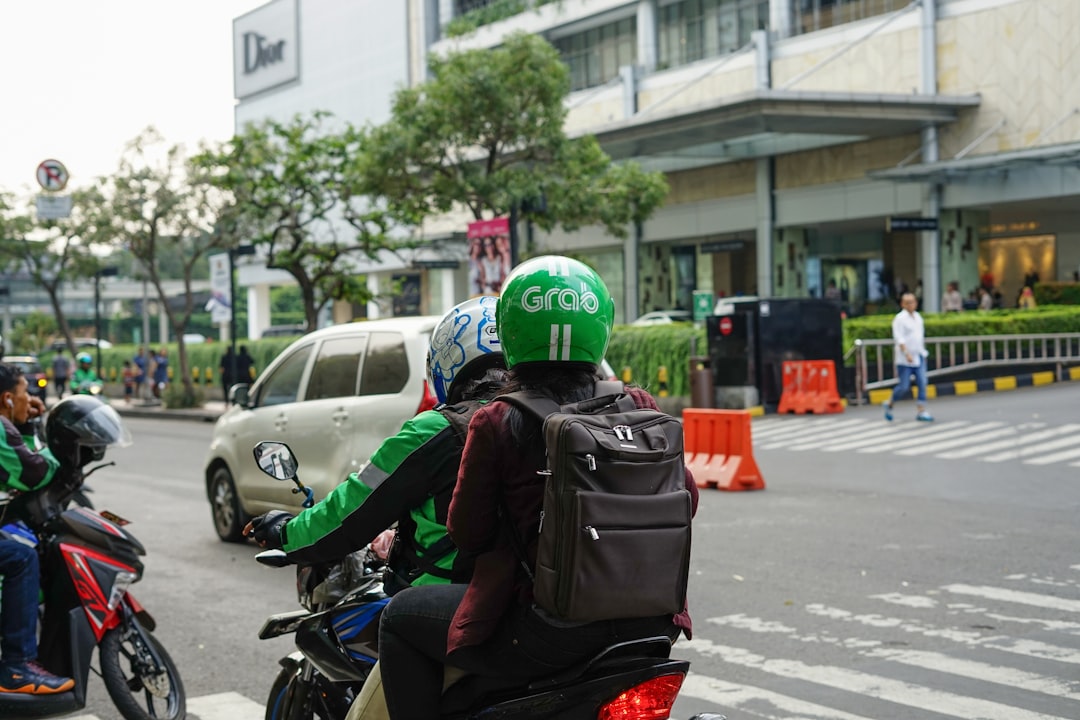Secrets of High Performing Digital Nomads

Introduction
The digital nomad lifestyle has evolved from a niche experiment to a mainstream career path. People are swapping office cubicles for coffee‑filled co‑working spaces in Bali, Lisbon, and Medellín, while still delivering world‑class results for clients and employers. What separates those who drift from those who thrive is a set of habits, mindsets, and systems that turn freedom into high performance. In this article we explore the hidden playbook of the most successful digital nomads and give you concrete steps to adopt the same principles.
The Mindset of a High Performer
Freedom with Discipline
Freedom is the core promise of remote work, but without discipline it can become a trap of endless scrolling and procrastination. Top nomads treat their schedule as a contract with themselves. They set clear boundaries between work blocks and personal time, then honor those boundaries as strictly as a traditional 9‑to‑5 job.
Growth‑Oriented Identity
Instead of defining themselves by location (“I’m a traveler”), elite nomads adopt a growth‑oriented identity (“I’m a problem‑solver”). This subtle shift means they seek environments that amplify their skills, not just their Instagram feed. When a new city offers a better network or a quieter workspace, they move; when it offers only novelty, they stay put.
Acceptance of Uncertainty
Living on the move means dealing with unreliable Wi‑Fi, changing visa regulations, and fluctuating income. High performers view uncertainty as a data point, not a roadblock. They maintain a contingency fund, have backup internet options, and keep a short list of “Plan B” clients ready for lean periods.
Crafting a Predictable Routine
Time‑Blocking Over Multitasking
Research consistently shows that multitasking reduces productivity by up to 40 percent. The most effective nomads break their day into distinct blocks: deep work, shallow tasks, meetings, learning, and personal care. They use simple tools like Google Calendar or a physical planner to lock in these blocks, then protect them with “focus mode” settings on their devices.
The 90‑Minute Power Cycle
The human brain operates in roughly 90‑minute cycles of high alert followed by a dip in focus. High performers align their deep‑work sessions with this rhythm: 90 minutes of uninterrupted concentration, followed by a 10‑15 minute break to stretch, hydrate, or walk outside. Repeating this cycle three to four times a day maximizes output without burnout.
Morning Rites That Anchor the Day
Even in a new timezone, a consistent morning routine grounds the mind. Typical elements include:
- Movement – a short jog, yoga flow, or body‑weight circuit.
- Mindfulness – a 5‑minute meditation or journaling session.
- Planning – reviewing the day’s time‑blocks and setting three priority outcomes.
When these rituals become automatic, the brain transitions smoothly from sleep to focused work, regardless of the surrounding environment.
Selecting the Ideal Workspace
Wi‑Fi Reliability as a Non‑Negotiable
Before committing to a co‑working space or café, high performers test the connection with a speed‑test tool. They look for at least 15 Mbps download and 5 Mbps upload for video calls and large file transfers. If the primary spot fails, they have a backup location pre‑scouted.
Ambient Noise Preferences
Some thrive in a bustling café, others need silence. The most successful nomads keep a portable “noise kit” – noise‑cancelling headphones, a white‑noise app, and a small fan for low‑level background sound. This kit lets them adapt any space to their ideal acoustic condition.
Ergonomics on the Move
Prolonged laptop use without proper posture leads to chronic pain. Elite nomads invest in a lightweight laptop stand, an external keyboard, and a portable mouse. Even when working from a hammock, they raise the screen to eye level and keep wrists neutral, preventing injury that could derail their productivity.
Leveraging Technology and Tools
All‑In‑One Project Management
Switching between multiple platforms creates friction. High performers consolidate tasks, timelines, and communication into a single system such as ClickUp, Notion, or Asana. They create templates for recurring client briefs, sprint planning, and weekly reviews, reducing the mental load of setup.
Automation for Repetitive Tasks
Automation is the secret sauce that frees mental bandwidth. Common automations include:
- Invoice generation using tools like FreshBooks or Wave, triggered when a project stage is marked complete.
- Time tracking with Toggl integrated into the project board, automatically logging hours for billable tasks.
- Email filtering via Gmail filters or Outlook rules, routing newsletters, client updates, and personal messages into separate folders.
Secure Connectivity
Working with sensitive data demands a reliable VPN. Top nomads choose a subscription that offers multiple server locations, a no‑log policy, and a kill‑switch feature. They also enable two‑factor authentication on all critical accounts, ensuring that a compromised device does not jeopardize client information.
Managing Finances on the Road
Multi‑Currency Accounts
When income streams arrive from different countries, conversion fees can erode earnings. Services like Wise or Revolut provide low‑cost currency exchange and local bank details for several regions. High performers route all client payments into a single Wise account, then allocate funds to their primary expense wallet.
Budgeting by Destination
Cost of living varies dramatically between cities. Elite nomads build a spreadsheet that lists fixed monthly expenses (software subscriptions, insurance, savings) and variable costs (housing, food, transport) for each location. They set a “maximum spend” ceiling per month, allowing for a comfortable buffer while still maximizing savings.
Building an Emergency Reserve
The freelance income model is inherently variable. A widely recommended safety net is three to six months of essential expenses saved in a high‑yield account. High performers automate a portion of each invoice directly into this reserve, turning savings into a habit rather than an afterthought.
Health, Wellness, and Longevity
Structured Physical Activity
Movement combats the sedentary nature of remote work. Successful nomads schedule at least three dedicated workout sessions per week, mixing cardio, strength, and flexibility. They use body‑weight routines that require no equipment, or they join local gyms that offer day passes.
Nutrition on the Move
Eating healthily while traveling can be challenging. The best practice is to adopt a “core food list” – items that are portable, nutrient‑dense, and easy to prepare: nuts, dried fruit, protein bars, instant oats, and canned legumes. When possible, they cook simple meals using a portable induction stove, reducing reliance on restaurant meals.
Mental Health Practices
Isolation can creep in despite constant travel. High performers cultivate a support network through virtual mastermind groups, regular video calls with friends, and participation in local meet‑ups. They also practice digital detoxes—setting one evening per week with no screens—to reset mental clarity.
Community and Networking
Intentional Co‑Working Choices
Rather than randomly dropping into any café, elite nomads select co‑working spaces that align with their industry or skill set. Spaces dedicated to tech, design, or marketing attract like‑minded professionals, facilitating organic collaborations and referrals.
Contributing Value First
When entering a new community, high performers focus on giving before asking. They share useful resources, host a short workshop, or volunteer for a local event. This approach builds goodwill and positions them as a valuable member, leading to inbound opportunities.
Leveraging Remote Job Boards
The best remote job boards are curated, niche‑specific platforms that filter out low‑quality listings. Examples include:
- We Work Remotely for tech and design roles.
- Remote OK for startups and SaaS companies.
- AngelList for early‑stage startups seeking freelancers.
High performers set up tailored alerts with specific keywords, saving time and ensuring they only apply to roles that match their skill set and compensation expectations.
Income Diversification Strategies
Core Service Offering
The foundation of any nomad’s income is a high‑value core service—software development, UX design, copywriting, or consulting. They invest heavily in honing this skill, positioning themselves as an expert who can command premium rates.
Passive Revenue Streams
To smooth income volatility, top nomads create passive streams that require minimal ongoing effort:
- Digital products such as e‑books, templates, or online courses.
- Affiliate marketing through niche blogs or newsletters.
- Investments in index funds or cryptocurrency with a disciplined, long‑term approach.
These streams generate baseline cash flow, allowing the core service to be pursued at a sustainable pace.
Retainer Relationships
Rather than one‑off projects, elite nomads aim for retainer contracts. Retainers provide predictable monthly revenue and deeper client relationships. They negotiate a fixed number of hours or deliverables per month, with clear escalation clauses for additional work.
Travel Logistics Made Simple
Visa Management
Long‑term stays require careful visa planning. High performers use resources like Nomad List’s visa guide or the government’s official e‑visa portals. They keep a spreadsheet with entry dates, visa type, expiry, and required extensions, setting reminders 30 days before any deadline.
Packing Light, Packing Smart
A minimalist packing list reduces logistical friction. Essentials include:
- A high‑quality, lightweight laptop (13‑inch, 2‑in‑1 if possible).
- A universal power adapter and portable charger.
- A compact travel bag (30‑L) with compression cubes.
- A small first‑aid kit and any prescription medication.
By limiting possessions, they avoid heavy luggage fees and can move quickly between destinations.
Health Insurance for Global Citizens
Standard health plans often lack coverage abroad. The best solution is a global health insurance policy from providers such as SafetyWing, World Nomads, or IMG. These plans cover emergency care, routine check‑ups, and tele‑medicine, offering peace of mind while traveling.
Continuous Learning and Skill Upgrade
Micro‑Learning Sessions
High performers allocate 15‑30 minutes each day to micro‑learning—watching a short tutorial, reading an article, or completing a coding challenge. This habit keeps skills fresh without overwhelming the schedule.
Structured Courses with Deadlines
When deeper knowledge is needed, they enroll in structured courses on platforms like Coursera, Udemy, or MasterClass. They set a personal deadline and treat the coursework as a client project, using the same time‑blocking method to ensure progress.
Peer Review and Feedback Loops
Regular feedback accelerates growth. Elite nomads join peer‑review groups where they share work drafts, receive critiques, and iterate. This process mirrors a traditional office’s performance review but is self‑directed and often more focused.
Case Studies: Real‑World High Performers
The Software Engineer Who Built a Remote Agency
Maria left a corporate job in Berlin and moved to Chiang Mai. She applied the time‑blocking method, using a 90‑minute power cycle for deep coding. Within six months she secured three retainer clients, each paying $5,000 per month. She reinvested half of the revenue into hiring two junior developers on a profit‑share model. Today her agency earns $30,000 monthly, and she spends two weeks per year traveling to new locations.
Key takeaways:
- Adopt a single high‑value service before scaling.
- Use profit‑share to align incentives with remote teammates.
- Keep overhead low by hiring contractors instead of full‑time staff.
The Designer Who Monetized Knowledge
Liam, a graphic designer, combined his client work with a side business teaching design fundamentals. He created a 10‑module online course, marketed it through a newsletter built on Substack. By allocating two hours every Friday to course promotion, he generated $2,000 monthly passive income. His core client work remained stable because he set clear boundaries and used a retainer model.
Key takeaways:
- Leverage existing expertise to create digital products.
- Use a small, consistent marketing window each week.
- Protect core client time with strict boundaries.
Actionable Checklist for Immediate Implementation
- Define your core service and write a one‑sentence value proposition.
- Set up a time‑blocking calendar with 90‑minute deep‑work cycles.
- Choose a primary project management tool and create a weekly template.
- Test Wi‑Fi at potential workspaces using a speed‑test before committing.
- Purchase ergonomic accessories: laptop stand, external keyboard, mouse.
- Create a multi‑currency account with Wise or Revolut for client payments.
- Build an emergency fund equal to three months of essential expenses.
- Schedule daily movement – at least 30 minutes of physical activity.
- Join one remote‑work community (Slack, Discord, or local meetup) and contribute value.
- Identify two passive income ideas and allocate 30 minutes per week to develop them.
- Map out visa requirements for your next three destinations and set calendar reminders.
- Enroll in a micro‑learning habit – 15 minutes of skill practice each day.
Conclusion
High‑performing digital nomads are not merely lucky travelers; they are disciplined architects of freedom. By cultivating a growth mindset, establishing predictable routines, mastering technology, and protecting both health and finances, they turn the nomadic lifestyle into a sustainable engine for productivity and income. Implement the habits outlined above, experiment with what fits your personal rhythm, and watch your remote career flourish while you explore the world.
Random Posts

Building a Secure Financial Plan on the Road
Learn to build a resilient financial system for digital nomads, covering income streams, budgeting, tax compliance, insurance, retirement and emergency funds, so you can travel worry-free.
1 month ago

Mountain Retreats for Remote Workers and Seamless Travel Strategies
Discover top mountain villages where remote work thrives, with reliable internet, affordable stays, and smart travel tips that let you stay productive while breathing fresh alpine air.
3 weeks ago

Practical Tips for Organizing Gear on the Move
Learn fast, stress-free gear organization for nomads: assess your travel style, pick the right packing system, streamline digital files and on-the-road laundry. Stay tidy, light, ready.
1 month ago

Living Light on the Road Building a Green Nomad Community
Discover how to travel light and green by joining a community that shares tools, knowledge, and renewable resources, turning solo nomad life into a sustainable, collaborative adventure.
3 weeks ago

Affordable Health Coverage Options for Long Term Travelers
Discover affordable health insurance for digital nomads: compare plan types, pick cost-effective options, and follow a step-by-step guide to stay covered worldwide without breaking your budget.
3 weeks ago
Latest Posts

Essential Software Every Remote Professional Should Use
Master remote work with essential tools: instant messaging like Slack, high definition video calls such as Zoom, and asynchronous voice apps. Streamline communication, stay connected and boost productivity.
1 day ago

Mastering Remote Work Productivity for Digital Nomads and Freelancers
Learn proven habits, tools, and tactics that help digital nomads and freelancers stay focused, deliver quality work, and maintain a sustainable lifestyle while traveling the world.
1 day ago

Tech‑Friendly European Towns Perfect for Remote Living
Discover Europe’s best small towns where fast internet, affordable living and vibrant tech communities let you work remotely while soaking up historic charm, lakeside views or mountain air.
1 day ago